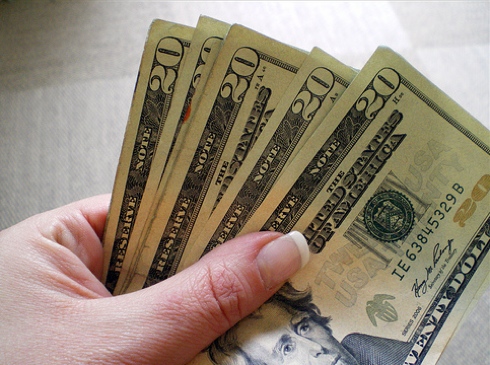Influential investors are scratching their heads over a little-noticed development: After downgrading the country’s credit rating, Standard & Poors is continuing to award AAA status to the same class of assets that nearly blew up the world economy three years ago.
From Bloomberg: “S&P is poised to provide AAA grades to 59 percent of Springleaf Mortgage Loan Trust 2011-1, a set of bonds tied to $497 million lent to homeowners with below-average credit scores and almost no equity in their properties.”
In other words: U.S. Treasuries — widely believed to be the safest investment in the world — don’t make the cut, but subprime mortgage investments do? What gives?
Subprime mortgage-backed securities are the same class of assets that fueled the housing bubble and triggered the 2008 financial crisis. According to a 2010 report by the Senate Permanent Subcommittee on Investigations, the main ratings agencies fell over themselves to give these bonds AAA ratings, then abruptly downgraded them to junk status after mass mortgage delinquencies made maintaining the false ratings untenable.
According to the subcommittee’s report, “In the end, over 90% of the AAA ratings given to mortgage-backed securities in 2006 and 2007 were downgraded to junk status, including 75 out of 75 AAA-rated Long Beach securities issued in 2006. When sound credit ratings conflicted with collecting profitable fees, credit rating agencies chose the fees.” This triggered a collapse in mortgage-related securities leading to trillions of dollars in investor losses and a credit freeze that contributed to — some contend caused — the financial crisis.
Yet today, members of the same bond family are, according to S&P, more trustworthy than Treasuries? Financial experts say this contrast illustrates a major problem with credit ratings agencies.
One top financial executive cautioned against assuming the Springleaf bonds are a poor investment — “it’s all in the specifics” — but also noted that the disparate ratings proves ratings are of questionable use to investors.
“Anyone who believes that there’s perfect internal consistencies across all different asset classes and within asset classes … that person should not be investing large amounts of money,” the source said. “It raises the question of whether we’re ever going to move away from these credit ratings agencies.”
This is a lesson big investors have taken to heart.
“Everybody has been led to believe over the years that AAA means AAA means AAA across the board,” Gregory W. Smith, the general counsel for the Public Employees’ Retirement Association of Colorado, told Bloomberg. “Anybody that didn’t learn in the 2008 crisis that doesn’t apply should find another line of work.”
“I’m trying to sort out why debt backed by the ability to tax in the United States is rated lower than securities that are backed by no particular ability to have additional revenue,” John Milne, CEO of JKMilne Asset Management also told Bloomberg.
An S&P spokesman notes that the U.S. downgrade isn’t incompatible with state, municipal, and even riskier finance bonds maintaining their AAA status. “[A] sovereign rating does not act as a cap on the ratings of issuers or issues domiciled within the sovereign or backed by assets sourced from within the sovereign. That applies to ratings on structured finance instruments as much as to corporate, municipal, and other credits.”
The firm weathered serious criticism after it downgraded U.S. debt, particularly for basing its initial decision to lower the rating on a significant miscalculation of the country’s projected debt. When the Treasury Department informed the firm of that error, they revised their justification for the downgrade, and did it anyway. Moody’s chief economist Mark Zandi declined to comment for this article, but passed along his critique of that episode.
“S&P incorrectly projected the nation’s debt-to-GDP ratio a decade from now at 93% instead of a more appropriate 85%,” Zandi wrote. “This is a substantial difference, though it didn’t change S&P’s decision.”
Partly for that reason, Treasuries didn’t suffer as a result of the downgrade. In fact they rallied — increased investor demand drove the yield on 10-year Treasury notes down below 2 percent in August, nearly two percentage points below yields for the highest rated mortgage backed securities.
Get the day’s best political analysis, news and reporting from the TPM team delivered to your inbox every day with DayBreaker. Sign up here, it takes just a few seconds.










